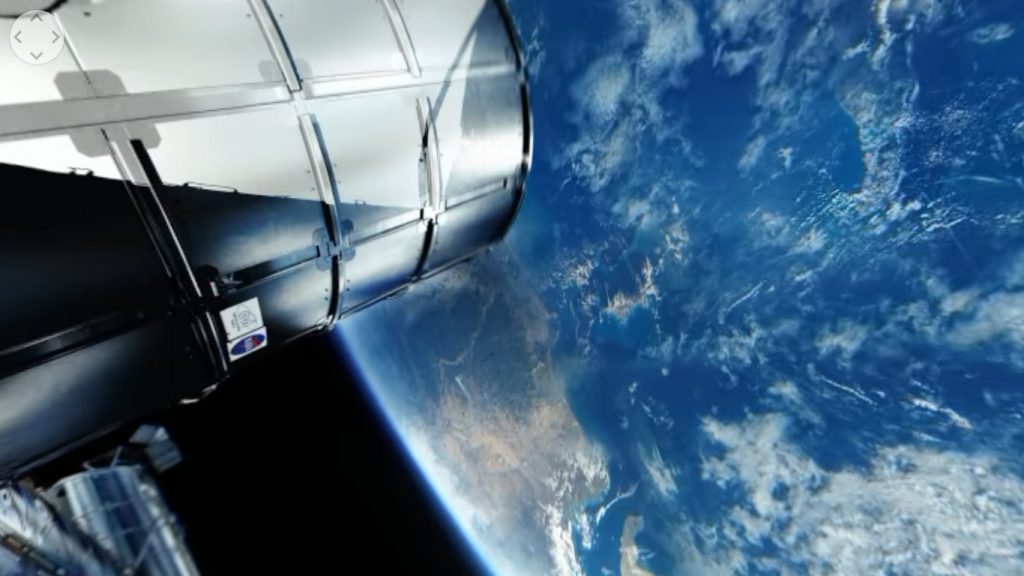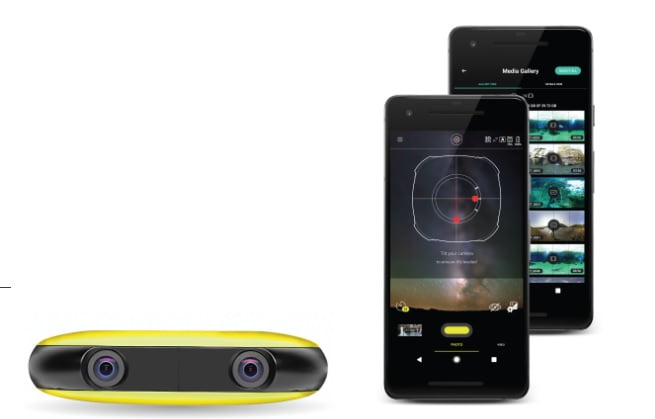The first-ever 3D VR (Virtual Reality) video footage filmed in space with the help of advanced Israeli-developed technology was released recently by National Geographic. And it is out of this world.
The rare clip was filmed by National Geographic in partnership with Neve Ilan-based company HumanEyes Technologies which provided its Vuze 3D 360-camera for the project as part of the National Geographic TV show “One Strange Rock.” The show is directed by the Oscar-nominated Darren Aronofsky and hosted by actor Will Smith, and is part of a documentary series focused on life on Earth, as seen from the perspective of eight astronauts.
The first episode aired in the US on March 26, 2018. And on April 16, National Geographic released a 4.5-minute clip showing some of what the Vuze camera captured in space.
The camera was launched aboard the International Space Station (ISS), a joint US-Russian-Japanese-EU-Canadian habitable artificial satellite in low orbit, where it was filmed both inside and outside of it, marking the first time a 3D VR experience has been created using actual footage from space.
The experience of “seeing the Earth outside of the ISS in immersive 360 video invokes the same ‘floating’ feeling as other space-themed VR experiences,” much in a way that, as one astronaut in the video opined, humans were never meant to see,” The Next Web reported last month.
HumanEyes CEO Shahar Bin-Nun has said that the camera was the “perfect companion” for astronauts and that the footage was “truly a once-in-a-lifetime opportunity to showcase the genuinely immersive experiences the camera creates, allowing viewers to feel as if they were on the ISS themselves.”
Getting to space
The experience, which HumanEyes says was “thrilling, exciting, and scary at the same time,” took months of preparations. The team at HumanEyes worked with National Geographic and NASA engineers to test the camera for space conditions while making sure it could withstand long periods of radiation.
SEE ALSO: Israeli VR Camera Goes To Space To Film For National Geographic
The camera passed but its battery didn’t make the cut, and the device would be charged and operated while plugged into a laptop.
“Some of the high-end professional cameras out there didn’t pass these tests, and we functioned,” George Giles, VP Marketing for HumanEyes tells NoCamels.
“For us, a small Israeli company with some 35 employees to have taken part in this is huge,” Giles says. “How many times can you say that your product was used by astronauts in space? It’s an amazing opportunity for us. Israel can say its tech made it to space.”
Why Vuze?
Sign up for our free weekly newsletter
SubscribeThe Vuze camera is also easy to use, small in size, and comparatively affordable.
NASA was looking for an off-the-shelf piece of equipment that was “the size of a sandwich,” Giles explains, adding that other cameras with the same capabilities are about the size of a laptop, not to mention that they can run into the tens of thousands of dollars
The Vuze camera costs $799 and “has two buttons, one of which is ON,” Giles says, and the other for recording. “The astronauts are not professional cameramen or videographers and they needed something that they could just turn on and operate instantly.”
HumanEyes also developed the Vuze+ camera ($1299) which allows for live streaming, “but they probably wouldn’t be able to use that in space, there’s not great internet out there and the bandwidth bill would be pretty high,” Giles jokes.
Vuze comes with a VR headset and its own app, and HumanEyes developed a VR production and editing platform for the device.
The camera is commended by online reviewers for having 3D stereoscopic capabilities which they say differentiate it from a number of other 360° cameras on the market,” but there are general complaints regarding low-light performance, and some of the editing functions, and price points.
“The Vuze straddles that prosumer [a consumer who uses professional equipment] space – too expensive for the mainstream, but not powerful enough for professionals,” writes a reviewer on Digital Trends.
From space to the sea
HumanEyes recently released technology that allows for the camera to be taken to even newer heights. Or depths, rather.
In April, the company unveiled a case for Vuze that enables 3D 360 videos underwater. Giles says it is the “first product of its kind at that this price point” – at $2,995 but it includes the camera.
Giles tells NoCamels that consumers have been sharing their scuba-diving jaunts, as well as their experiences swimming with sharks and dolphins. Probably not together.
HumanEyes Technologies was founded in 2001 as a printing business providing solutions for creating and developing 3D and 2D effects. The company later pivoted into the VR and optical products industries and has become a regular at some of the most important trade shows in the world.
Related posts

Editors’ & Readers’ Choice: 10 Favorite NoCamels Articles

Forward Facing: What Does The Future Hold For Israeli High-Tech?

Impact Innovation: Israeli Startups That Could Shape Our Future





Facebook comments